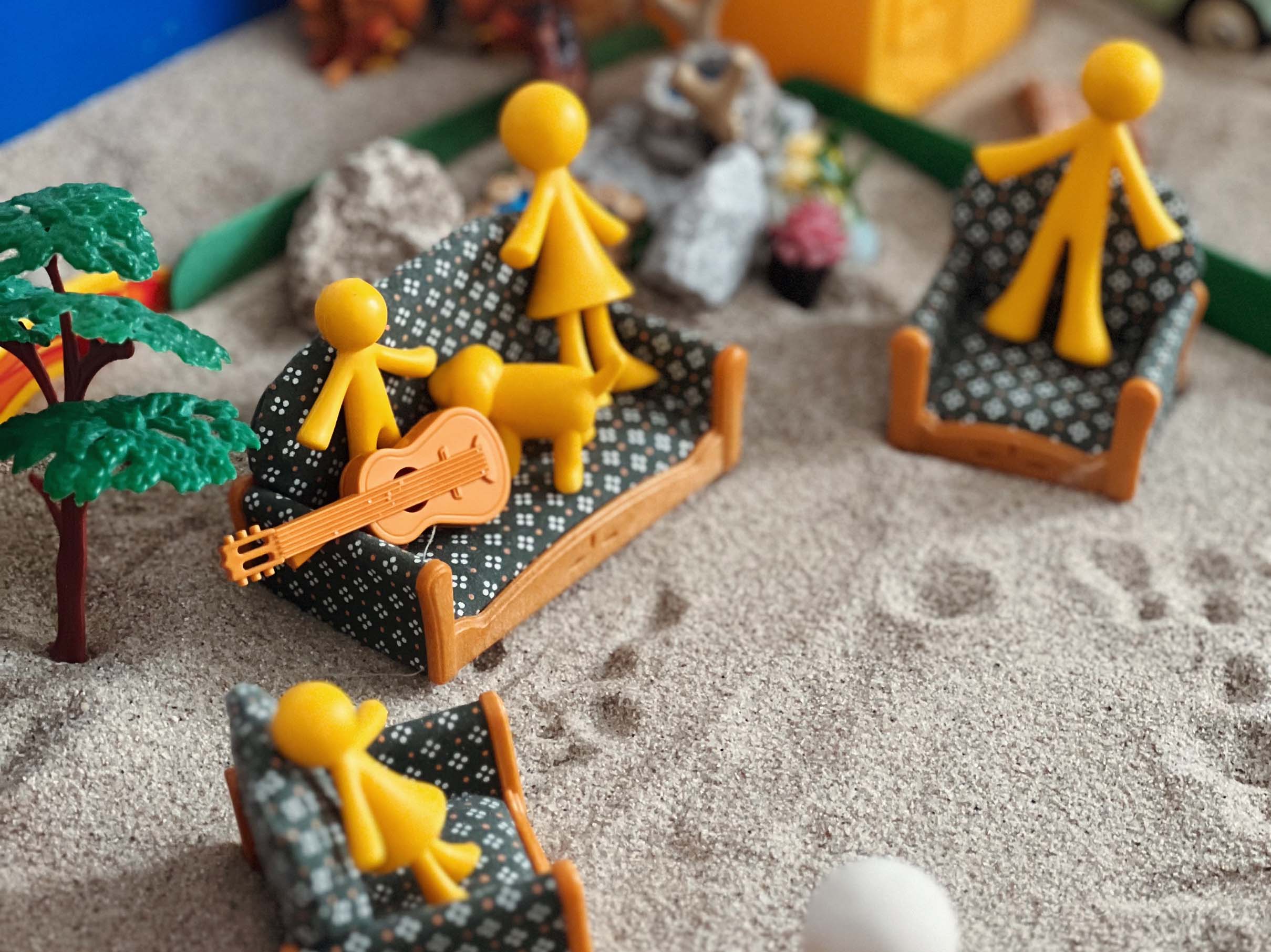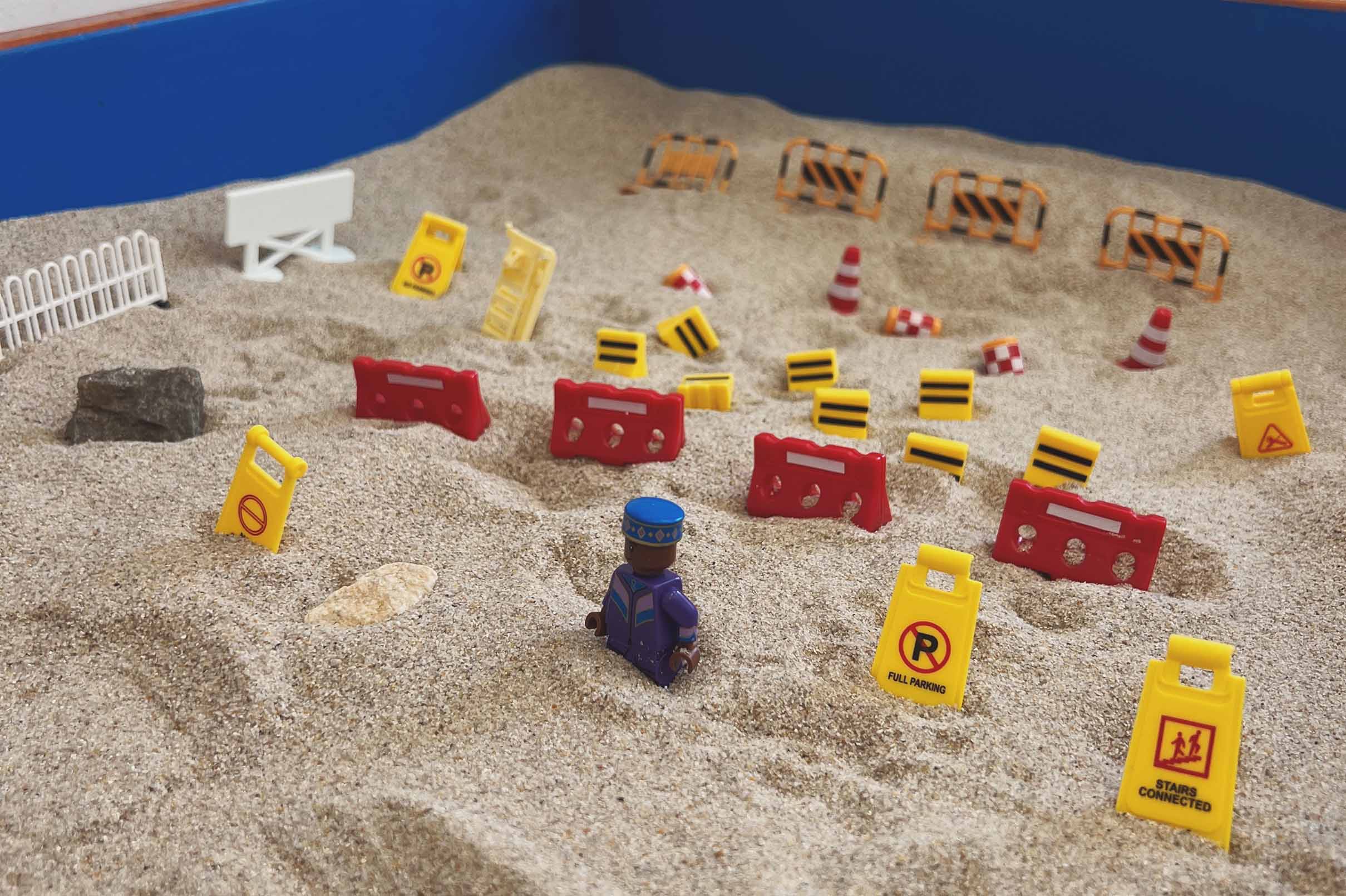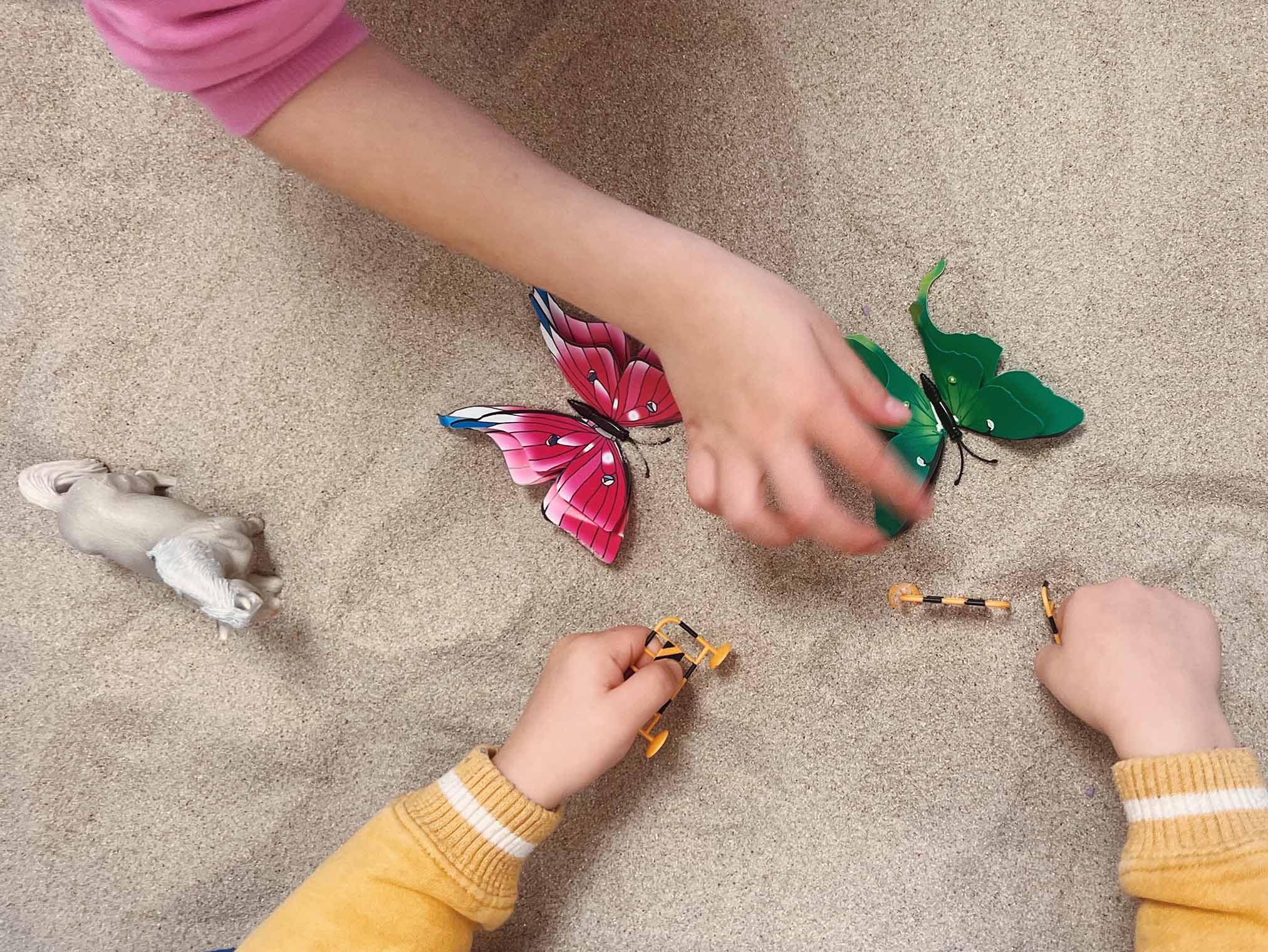In psychotherapy, a wide array of techniques and approaches are used to support the goals collaboratively established by the therapist and the individual or family in therapy. There is no one-size-fits-all solution because effective therapy adapts to the unique needs, emotional demands, and developmental stage of each person, while also aligning with the training and strengths of the therapist. What may be a powerful intervention for one person might not resonate with another, which is why having a diverse therapeutic toolkit is essential.
When working with children, this adaptability becomes even more crucial. Children often lack the verbal skills to express their inner world clearly. Their primary language is not spoken words, but play. Through play, children process experiences, express emotions, and explore relationships. For this reason, play-based approaches are considered foundational when working with younger clients, offering a natural and developmentally appropriate means of communication and healing.
What Is Sandplay Therapy?
Sandplay therapy is a nonverbal, expressive therapeutic approach that uses a sandbox and a variety of miniature figures and objects to create scenes that reflect a person’s internal world. The client is invited to arrange figures in the sand, creating landscapes, symbolic representations, or abstract compositions. The materials can vary depending on what each clinic or therapist offers, but typically include small figurines of different types, animals, natural elements, fictional elements, and structures. A key component of this technique is the inclusion of open-ended materials and loose parts- items like stones, shells, sticks, and fabric—which encourage creativity, symbolic thinking, and freedom of expression.

When to Use Sandplay Therapy
Sandplay therapy can be introduced at various points in the therapeutic process, depending on the client’s readiness and the clinical judgment of the therapist. It is particularly appropriate when a client shows openness to creative expression or when verbal communication alone seems insufficient to process certain experiences. For some, it may be introduced early on to establish safety and engagement through a non-threatening medium. For others, it might become valuable later, once a therapeutic alliance has been built and the individual is ready to explore deeper emotional content.
This technique is especially helpful when the client struggles to articulate their thoughts or feelings, whether due to age, trauma, anxiety, neurodiversity, or emotional overwhelm. Sandplay can also be useful when the therapist senses a need to support the client in connecting with their inner world, unconscious processes, or unresolved experiences through symbolic and visual representations. It serves as a powerful tool to help clients externalize complex emotions, visualize internal conflicts, and gain insight in a contained, imaginative, and sensory-rich environment.
Types of Prompts in Sandplay Therapy
One of the strengths of sandplay therapy is its flexibility and adaptability to the needs of each individual. Prompts can be tailored to fit the developmental level, therapeutic goals, and emotional state of the client. Before introducing a prompt, however, it is important to first offer a moment for the client to connect with the sand, both sensory-wise and emotionally. Allowing the individual to touch the sand, feel its texture, and explore it with their hands can help regulate the nervous system and support emotional grounding. This transition into the therapeutic space is especially critical when working with trauma or overwhelming emotions, as it sets a tone of safety, presence, and readiness. It helps the client shift from the external world into their internal experience, preparing them to engage with the materials from a more centered and connected place.
Some examples of guided prompts include:
- “Create a world using anything you want.”
- “Can you represent your family in the sand?”
- “What does moving to a new country look like?”
- “Where do you see yourself in five years?”
- “How would you show your relationship with different emotions, using these materials?”

At the same time, it is equally valuable to offer the client complete freedom to engage with the sandbox without any prompt. Some individuals may benefit most from unstructured exploration, touching the sand, selecting objects that resonate with them, or simply arranging items in a way that feels right in the moment. This freedom supports self-direction, allows spontaneous expression, and can lead to rich, unconscious material emerging naturally. Whether structured or open-ended, the process honors the individual’s pace and inner world, making room for authentic and meaningful therapeutic work.
These prompts are invitations rather than directives, allowing clients to project their inner thoughts and feelings into the symbolic realm of the sand tray.
Benefits of Sandplay Therapy
Sandplay therapy offers a wide range of therapeutic benefits, making it a valuable tool across all ages, from young children to adolescents and adults. It taps into deep psychological processes while providing a sense of safety and containment that is essential for healing. Some of the core benefits include:
- Symbolic Communication: Sandplay allows individuals to express thoughts, emotions, and experiences that may be difficult or even impossible to articulate verbally. Through the use of symbolic figures and metaphorical scenes, clients can communicate complex internal dynamics in a non-verbal language that often accesses unconscious material. This symbolic process is especially powerful for those who have experienced trauma, loss, or emotional overwhelm, as it bypasses the need for cognitive processing and opens the door to deep inner work.
- Safe and Contained Environment: The sandbox itself acts as a physical and psychological container, a defined space where internal chaos can be expressed in a manageable way. This boundary provides a sense of safety and structure, essential for individuals who may feel emotionally fragmented or dysregulated. Within this space, intense emotions can be externalized and symbolically organized, allowing the person to gain distance and perspective without being overwhelmed.
- Healing Through Play: Especially for children, play is not just recreational, it is essential for processing and integrating life experiences. Sandplay offers a developmentally appropriate medium for working through challenges such as divorce, grief, relocation, bullying, or attachment disruptions. For adolescents and adults, engaging in play can also reawaken a sense of creativity and spontaneity that fosters healing and emotional release.
- The Therapist as Witness, Not Interpreter: A fundamental principle of sandplay therapy is that the therapist does not immediately analyze or interpret the scenes. Instead, they act as a witness to the client’s process, offering a nonjudgmental, accepting presence. This dynamic reinforces the client’s autonomy and inner wisdom, creating a respectful and empowering therapeutic relationship. Over time, patterns and meanings may emerge naturally through the client's own reflections, or be explored gently if the therapeutic alliance and readiness are present.
- Supports Emotional Regulation: The multisensory engagement of sand, touch, vision, sometimes even sound, has a calming and grounding effect on the nervous system. The tactile experience of handling sand and arranging figures can soothe anxiety, release pent-up emotions, and provide a mindful, embodied way to process feelings. This is particularly valuable for individuals who struggle with emotional regulation, including those with trauma histories, anxiety, or neurodivergent conditions.
- Accesses the Unconscious and Facilitates Integration: By engaging with symbols and narratives that emerge spontaneously, sandplay supports integration of unconscious material. This process often leads to insight, emotional breakthroughs, and shifts in inner conflicts. It can help clients understand themselves in a deeper way, promote self-acceptance, and move toward resolution of long-standing psychological wounds.
- Engages Multiple Senses and Modes of Expression: Unlike talk therapy, which primarily engages verbal and cognitive faculties, sandplay is a multisensory and kinesthetic experience. This makes it more inclusive and accessible for individuals with different learning styles, developmental levels, or cultural backgrounds. It allows for a fuller, more embodied expression of the self.

In sum, sandplay therapy is not just an alternative technique, it is a deeply respectful, versatile, and powerful approach that honors the whole person. Sandplay therapy is a unique and powerful technique that supports emotional healing, self-expression, and psychological integration across all stages of life. Whether used with children who speak through play, adolescents navigating identity, or adults processing deep emotional wounds, this approach meets clients where they are beyond words. By offering a safe, contained, and creative space, sandplay invites individuals to explore their internal world symbolically, regulate emotions, and find meaning in their experiences. Its flexibility and depth make it a valuable therapeutic tool for professionals supporting diverse needs across the lifespan.
About the author
Noa Zelman is a licensed child development psychologist with over 10 years of experience helping families navigate the complexities of emotional development. She is a dedicated child psychologist who believes in fostering positive mental health from the earliest years of life. With a deep passion for guiding children in understanding what healthy and safe relationships with people and environments look like, Noa is committed to supporting their emotional growth. Making a lasting impact on the lives of children and their families has been Noa’s greatest motivator, driving a career centered on empathy, education, and meaningful connection.
Division of Psychology, Psychotherapy and Coaching
Psychologist
Children, adolescents and young adults
Languages: English, Spanish, Catalan and Hebrew

